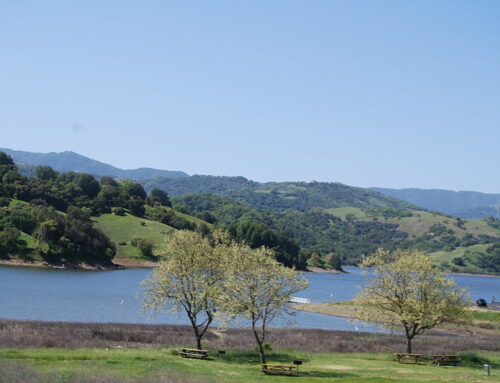Published in the Sept. 2-15, 2015 issue of Morgan Hill Life
By Marty Cheek
On Christmas Eve 1861, the deluge began. A series of winter storms hit the West Coast of the United States for 43 straight days. California’s Central Valley became a great lake. Water reached a depth of 30 feet in some places, drowning towns and thousands of cattle. Sacramento stood under 10 feet of water for several months.
That Great Flood of California caused the damage equivalence of $230 million in the current economy. It sounds minor compared to modern-day storms such as Katrina and Sandy, but realize that California was still a frontier state of only 500,000 people, not the nearly 39 million people residing in the state today.
There’s a reason I’m bringing up the Great Flood of California of 1861-1862 during a time when the Golden State is undergoing the fourth year of a severe water shortage. Our state, we must remember, is a place of extremes.
Very often we’ve seen throughout history that if it’s not a drought it’s a deluge. And scientists at the National Oceanic and Atmospheric Administration say there’s a high probability of California getting hit by a barrage of storms this winter. An El Niño is forming in the Pacific Ocean that promises to be one of the strongest ever recorded. “Godzilla El Niño” the media has christened it.
The last time we had a super intense El Niño storm season was in the winter of 1997-1998. That event caused $35 billion in destruction and 23,000 deaths around the world. And that year was also one of the hottest ever recorded for Earth.
During an El Niño year, ocean water releases massive amounts of heat energy into the atmosphere. Combined with the effects of global warming, this oceanic heat adds significantly to the overall global ambient temperature.
The El Niño system happens between every two to seven years when trade winds blowing east to west weaken, setting off a chain of weather-energy related events that have impact all over the world. The changes in weather patterns can wreck havoc on the lives of people on North and South Americas, Asia, and Australia.
Although weather can often be unpredictable, the NOAA scientists are confident with a 90 percent certainty that we’ll have a stormy winter season as the El Niño peaks in the late fall. And with the combination of global warming effects on weather, Californians will get a heck of a lot of rain.
At first this sounds like a blessing, with the water filling our state’s empty reservoirs and helping to reduce the impact of the drought. But the downside is that the storms will be tropical in nature and milder in temperature.
Precipitation falling on the Sierra Mountains usually comes down as snow, helping to build a snow pack which keeps a stock of frozen water for the state throughout the year. But if the air, because of global warming, is too warm, the water will come down as torrential rains on the mountains, cascading down into the Central Valley in rivers and creeks and causing devastating flooding unlike anything Californians have seen in about 150 years.
In 2010, the U.S. Geological Survey in Menlo Park released a report titled “ARkStorm: California’s Other ‘The Big One.’”
The report describes a scenario of a hypothetical super storm event estimated to happen between every 100 to 200 years. It could potentially cause an emergency situation on par with a massive San Andreas Fault earthquake hitting California, with total property damage approaching $400 billion in damages and many lives lost.
The ARkStorm model developed by the USGS projects an “atmospheric river” (The “AR” in ARk) of moist tropical air transporting a nonstop series of intense storms that dump as much as 10 feet of water over a duration of time of a month or more. Adding to the destruction are wind gusts of 125 miles an hour. More than 1.5 million Californians might be driven from their homes from flooding and landslides.
Much of the state would be devastated, especially the Central Valley where cropland and ranches would be covered by a lake of storm water. The flooding and land erosion would also damage important infrastructure such as highways and aqueducts, which are vital to our state’s economy. The ARkStorm’s ripple effect would be felt in the rest of the United States in terms of rising prices for food and other costs.
An ARkStorm would hit the Silicon Valley hard, with low-lying areas such as Sunnyvale, Mountain View, Alviso and parts of San Jose seeing major flooding. Downtown Morgan Hill would also see a historic level of flooding, which could severely impact the development now taking place there.
As demonstrated by the Great Flood of California a century and a half ago, massive storms are a historic reality. Not that the predicted El Niño storms this winter will cause an epic flood of that scale, but we need to prepare ourselves for the inevitable. The extreme weather events caused by human-induced climate change will be an ever growing certainty in our state’s future.








